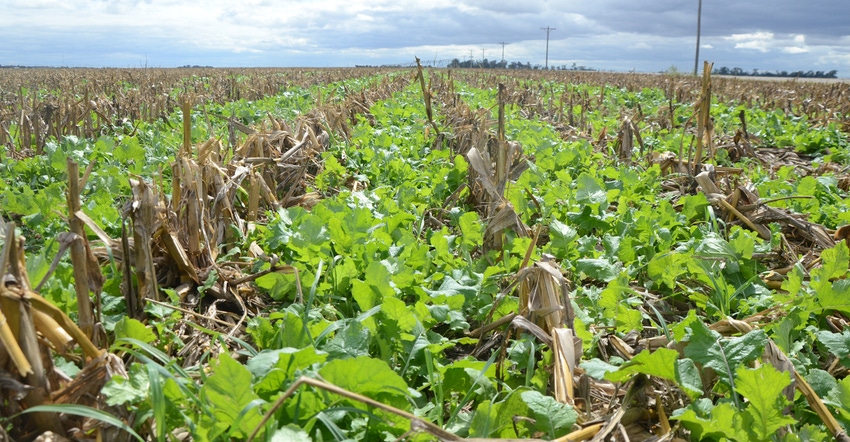March 18, 2021

As spring planting nears, Iowa Secretary of Agriculture Mike Naig encourages farmers to start formulating a plan to terminate the cover crops they planted last fall. Best management practices will vary based on the fall planting date, spring growth conditions and the goals established by the farmer or landowner.
The Iowa Department of Agriculture and Land Stewardship recommends that farmers consult with their agronomist, insurance agent or the USDA Natural Resources Conservation Service to make sure they're maximizing cover crop benefits while protecting their cash crop yields.
"Cover crops are a critical piece of Iowa's Nutrient Reduction Strategy; they enhance soil health and improve water quality, while also offering weed control, livestock grazing and carbon-reduction benefits," Naig says. "Farmers and landowners are seeing the benefits of cover crops and are seeding more acres than ever before. We saw record interest in our state-level cover crop programs again in 2020."
The Iowa Department of Agriculture and Land Stewardship offers six tips for cover crop success:
1. Evaluate for winterkill. Scout the cover crop fields and check the crown of the plant for green plant tissue. If the leaves are brown and there is no visible green material near the soil surface, the plant may have winter-killed. Oilseed radish and oats typically winter-kill and do not need to be terminated. Winter cereal rye, winter wheat and winter triticale often need to be terminated in the spring.
2. Consider termination options. The Conservation Systems Best Management Practices Manual provides termination guidelines that minimize the impact on cash crops. Herbicides or roll killing can be an option for termination. Tillage can also be used but is not recommended because planter challenges may occur. Tillage also disrupts the cover crop residue and makes it less effective in preventing soil erosion and suppressing weeds.
If tillage termination is required, it may take more than one pass to effectively terminate the cover crops. If herbicides are used to terminate the crop, it is best to spray when the crop is actively growing, during the middle of the day, and when overnight temperatures are above 40 degrees F.
3. Allow for growth. To see maximum benefits, allow cover crops to grow as long as possible. Plan to terminate cover crops near soybean planting dates. If farmers or landowners are planting corn for the first time after an overwintering cover crop, terminate 10 to 14 days before the estimated corn planting date.
4. Adjust planter setups. The soil conditions in a field planted after a winter cereal cover crop will be different than the conditions of a tilled or no-till field without cover crops. Evaluate the planter setup and make sure that the seed slot or trench is properly closed at planting, and seeds are at the right depth. An open seed slot can damage corn seed.
5. Understand crop insurance requirements. Crop insurance plans will mandate when cover crops must be terminated. Some policies require that cover crops are terminated five days before planting cash crops. These timelines will vary based on insurance policies, planting zones and tillage practices. Farmers and landowners should contact their insurance agents to discuss the details of their cash crop insurance policies.
6. Plan ahead for future planting. Cover crop management plans may need to be adjusted based on the type of cover crops planted and how they were terminated. For example, some residual herbicides have carryover restrictions for certain species of cover crops. Farmers and landowners should talk to their agronomists or cover crop seed representatives about how to integrate cover crops into their fields.
The Iowa Department of Agriculture and Land Stewardship offers annual funding to help farmers and landowners integrate cover crops into their operation. Sign-up for the statewide cover crop cost-share program begins in July. To learn more about state and federal cost-share opportunities, visit a Soil and Water Conservation District Office.
These tips were developed with help from the Iowa cover crop working group, which includes representatives from the Iowa Department of Agriculture and Land Stewardship, Practical Farmers of Iowa, Iowa State University, Iowa Learning Farms, and USDA Agricultural Research Service. More cover crop information is at cleanwateriowa.org, iowalearningfarms.org or practicalfarmers.org.
Source: Iowa Department of Agriculture and Land Stewardship, which is responsible for the information provided and is wholly owned by the source. Informa Business Media and its subsidiaries aren't responsible for any of the content contained in this information asset.
You May Also Like




